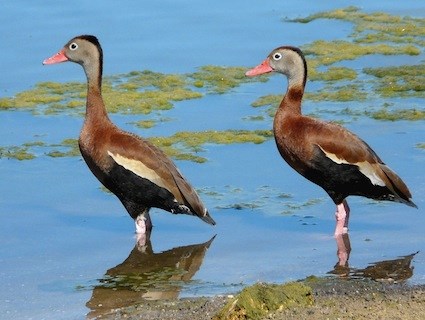SOFT ENGINEERING IN A MORE DEVELOPED
COUNTRY
WHAT IS THS BACKGROUND TO THIS
PROJECT?
·
The
river Kissimmee once meandered for 103 miles through central Florida.
·
Its
floodplain, which reached up to 3 miles wide, was regularly inundated with
heavy seasonal rain for long periods of time creating a unique and highest
diverse ecosystem in North America.
·
In
the 1940’s, the River Kissimmee endured prolonged flooding after a series of
hurricanes which had severe impacts on the people in the region. So drastic
measures were taken by the Central and Southern Florida Project and the
Kissimmee was cut and dredged and channelized (from 1960-1971) into a 30 feet deep straightway: the
C-38 canal.
·
Although
flood control benefits were achieved, it was soon considered to be an
‘ecological disaster as waterfowl numbers fells by 90% and Bald Eagle nesting
fell by 75%.
·
In
response a restoration project was authorised in 1992, which aims to be
completed by 2019.
HOW IS THE RIVER BEING RESTORED?
·
One
aim of this project was to return the river back to its meandering self and thus
restore its ecological integrity but another aim of the restoration was to
maintain flood protection.
·
The
meanders were formed by cutting out the original meander scars into oxbow lakes
and then connecting them to the river. The sediment was then used to backfill
the canal so the original meandering river could flow naturally.
·
The
upper and lower portions of Canal 38 will remain channelized to maintain flood
protection benefits, while the middle 22 miles of canal are being replaced with
40 miles of meandering river.
·
The
total cost of the project is estimated to be around $500m including the
acquisition of 102k acres of floodplain that was previously used for
farming/human habitation.
WHAT IMPACTS HAS THIS PROJECT HAD?
·
Dissolved oxygen levels have increased and sand
bars have reformed on the river bed providing new habitats to support greater
biodiversity.
·
Flora and fauna such as the Black-Bellied Whistling Duck, that
disappeared when the system was channelized have returned in great numbers and
are now thriving in the newly restored system.
·
The
wider Kissimee basin is now protected from flooding by both soft and hard
engineering methods. The restored floodplain will store water and decrease lag
time naturally whilst the remaining canal & dams allow discharge to be
regulated artificially.
·
The
river is now important for tourism and education. For example the Riverwoods
Field Laboratory hosts ecologists carrying out research and runs eco-tours of
the river.
· The
newly restored the floodplain is now open for public recreation such as
horse-riding and camping, bird-watching and fishing.
Discussion point: Was the restoration a good idea for flood
protection?
With thanks to Yasmin Karabasic






No comments :
Post a Comment